Carefully stepping off the boat’s bow ramp, I am nearly ready for our first dive of the day. Instantly, I feel the ground collapse beneath me, sucking me down slowly until I am knee-deep in muck. Hmm – should have seen that one coming. However, the sinkhole does provide a surprisingly stable position to put on the final pieces of my dive gear. I think to myself, we will have to swim away from this spot to start our dive because I have definitely silted up this entire area. I make a mental note to remember basic low-vis dive etiquette.
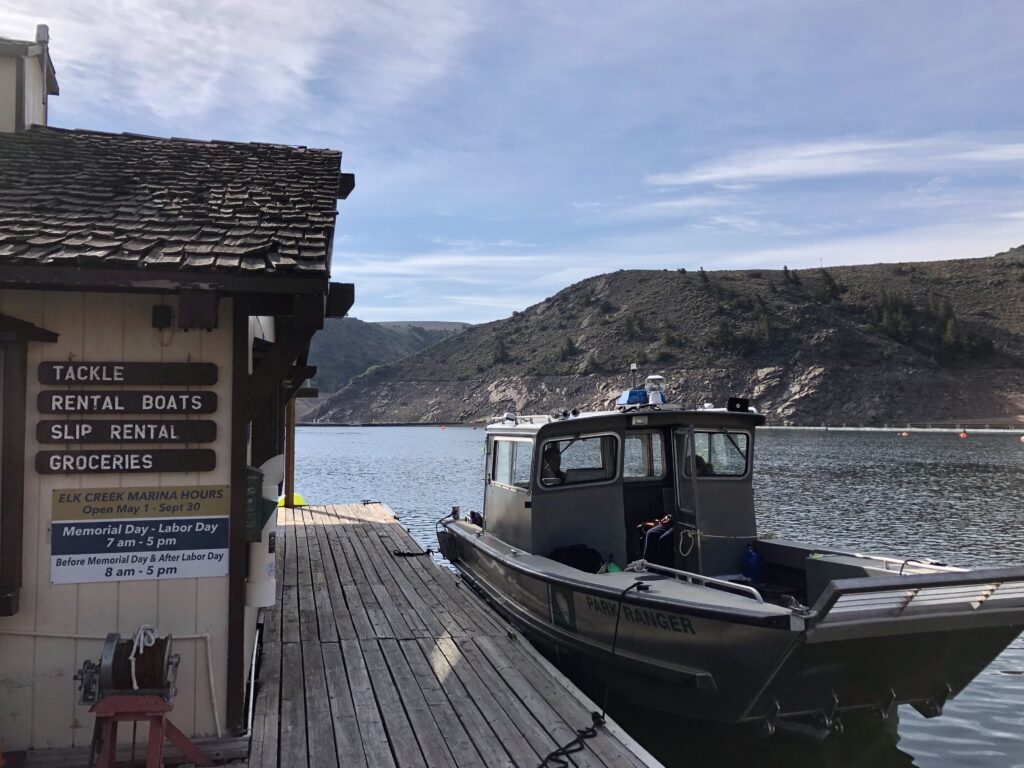
The public marina at Curecanti National Recreational Area, where we launch the NPS Park Ranger vessel for dives
This week I am diving with the excellent team at Curecanti National Recreational Area. Before my arrival, Melissa Post, Law Enforcement Ranger, host, and dive buddy for the week, warns me, “there’s not much to see in Blue Mesa” (the reservoir we will be diving within the park). Nevertheless, I am curious to see what Curecanti has to offer and look forward to making the short road trip from Denver. As a rule, I tend to avoid looking at images of my destination before I arrive. Really, it is in order to be able to go into a new experience, whether it be a new country, hike, campsite, or city, with minimal expectations or preconceived ideas on how it should look. I arrive at the park as day turns to dusk, pleasantly surprised by the scenic winding roads decorated with cliffs, rivers, mountains, and meadows.
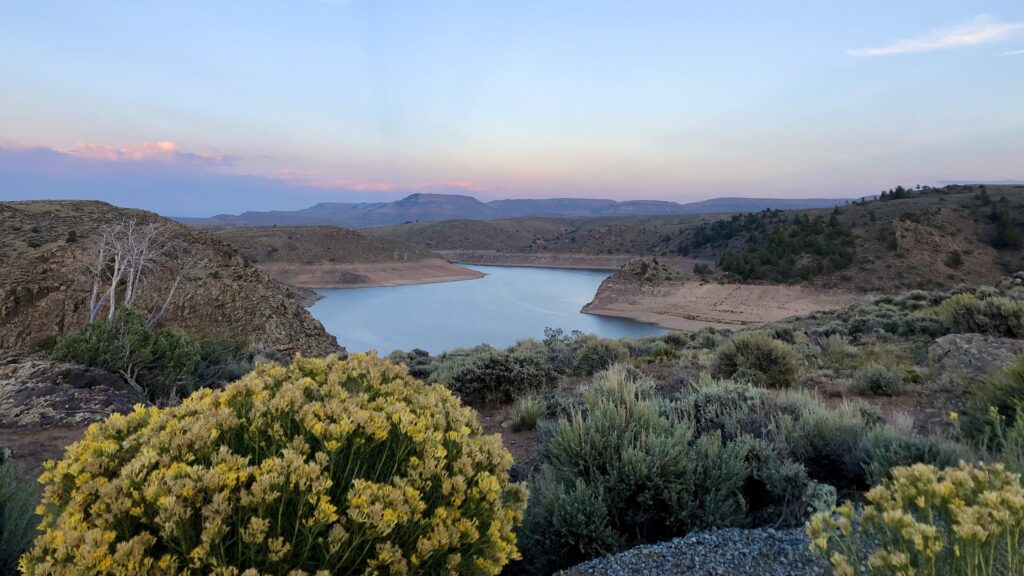
Overlooking Blue Mesa from NPS on site housing – caught in its finest form as I arrive from Denver
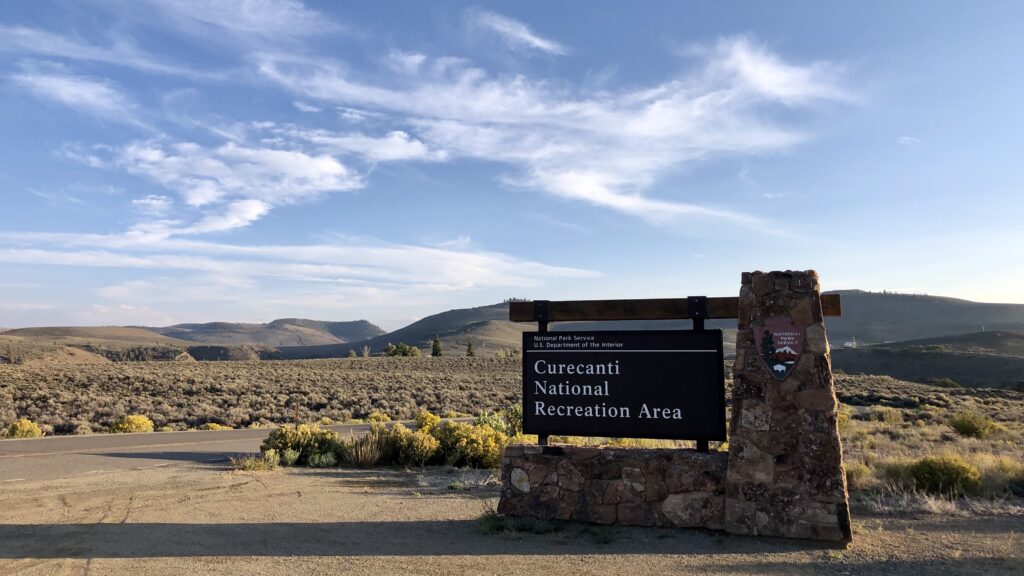

Roadside views en route to the park
Underwater is a different story. If there were much to be seen here, well, I wouldn’t have seen it anyway. Quite literally, there is not much seeing to be done underwater – unless it is about a foot in front of your face! Joined by Jessica Frey, NPS Wildlife Technician (and topside support Spencer Reese from the Maintenance team), the four of us spent the next few days together refreshing skills, scoping out suitable dive sites for training, and practicing underwater searches. I enjoyed the challenge of diving in limited visibility. It reminded me of my training as a scientific diver at Cape Breton University in 2018. Snowy weather, an ill-fitting wetsuit in 50-degree seas, low vis, silty bottom, and the fact that we had to precisely locate and change out water quality loggers at fixed sites made for challenging conditions. Gradually refamiliarizing myself with dry suit diving (after receiving training in British Columbia in 2020), this week marks the transition into the cold water portion of my internship. Although I am sad to leave the fish and friends of the tropical Pacific behind, the blow is softened by the next great adventure.
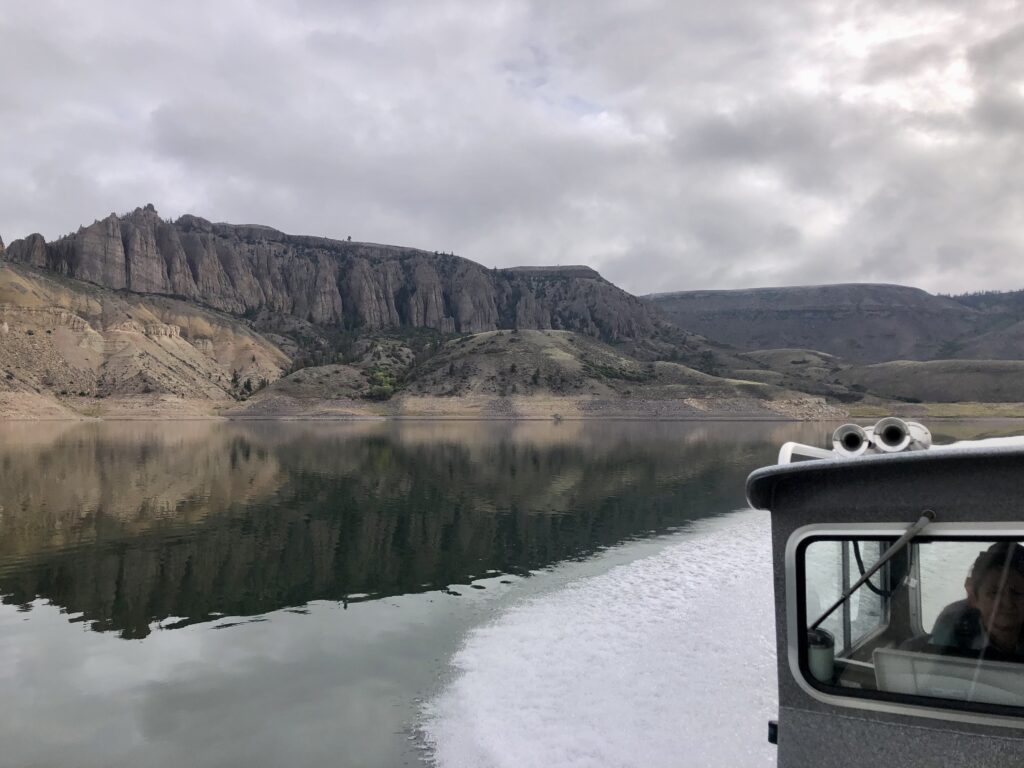
Selecting our dive site alongside the scenic Dillion Pinnacles
Whereas spirits are usually high during dives at the other parks I’ve visited, a day of diving for the team at Curecanti often means something more somber. As a public safety dive team, employees and volunteers are recruited when a visitor is having either a bad – or very, very bad, day. From emergency rescues and body recovery to wreckage removal of planes, boats, ATVs, and other odds and ends, no two dive operations here are alike. In addition to dry suits and scuba tanks, rescue operations require innovative troubleshooting and often feature the help of massive lift bags and customized cranes. Melissa and Jess take me through several search patterns above and below the water, describing their pros, cons, coverage, and suitability for various missions. Although we follow standardized search protocols (such as a windshield-wiper or jackstay), rarely do these searches look as good underwater as they do on paper. Even in an environment seemingly as homogenous as Blue Mesa, a few jutting rocks or sunken logs can catch lines, pulling you off course and jeopardizing the efficacy and coverage of the search. Nowadays, with the help of State Parks and a multi-beam sonar, the Curecanti dive team can narrow down the location of search items before getting in the water – helping to streamline the effort and increase the chances of a successful operation.
Diving in Curecanti is rarely glamorous work but provides a necessary service, keeping the reservoir free from environmental pollutants and providing closure to those affected by recreational boating accidents and mishaps. Truly honorable work, it ignites an inspiration within me to seek opportunities where I can use my unique set of skills as a diver to contribute more to the community in ways beyond basic natural resource monitoring and scientific communication. Day-to-day, each employee at Curecanti fills multiple roles, as the demands and priorities of recreational areas differ significantly and may be more multidisciplinary than National Parks. On occasion, a quick radio call prompts Melissa to change out of field clothes back into Ranger uniform, seamlessly transitioning from boat operator to law enforcement officer at the drop (or swap) of a hat.

Curecanti National Recreational Area hub for Park Rangers, maintenance, and natural and cultural resources
Not without its hiccups (a leaky seal here, vanishing boat keys into a black hole there), the week flies by, and I finish our last dive feeling more confident in my dry suit skills. Now, I am ready to take on colder sites and more complex tasks underwater. Any ruffle in dive operations this week has been amalgamated into a revised mental checklist (to be flipped through before each upcoming cold-water dive), and the chance to whip out my spiffy save a dive tool kit (expertly put together by NPS SRC Chief, Dave Conlin, backed by decades of dive knowledge – a priceless item if ever to be packaged up and put on shelves).

My dive kit gets a bit bulkier these days with the added dry suit, warm undergarments, and weight harness
It was an absolute pleasure to join your team, Melissa, Jess, and Spencer, in the field each day. Visiting Curecanti was a valuable addition to my internship, made memorable by our time both above and below water. Traveling back to Colorado also meant the chance to reconnect with the SRC crew – which I hadn’t seen since the start of my internship (and a quick trip to Jason’s deli in true Lakewood fashion), and time at my home-away-from-home in Boulder, with Michelle, Dave, and Maya the dog, tucking in comfortably for the weekend and catching up over shared meals at a local eatery.
It puts a great smile on my face to think about the enormous cheerleading team I have within the NPS Dive Program, supporting and following along with me during this internship. At each park, I am surrounded by people who love what they’re doing and where they are doing it – and the energy is contagious. Before this internship, I saw diving as likely a bonus, not a focus of a future career. How could I ever get so lucky as to do this every day? However, I can clearly see, that diving is a necessary tool we need to quantify, evaluate, monitor, and discover the valuable submerged resources, including those hidden within the US National Park Service’s impressive range.
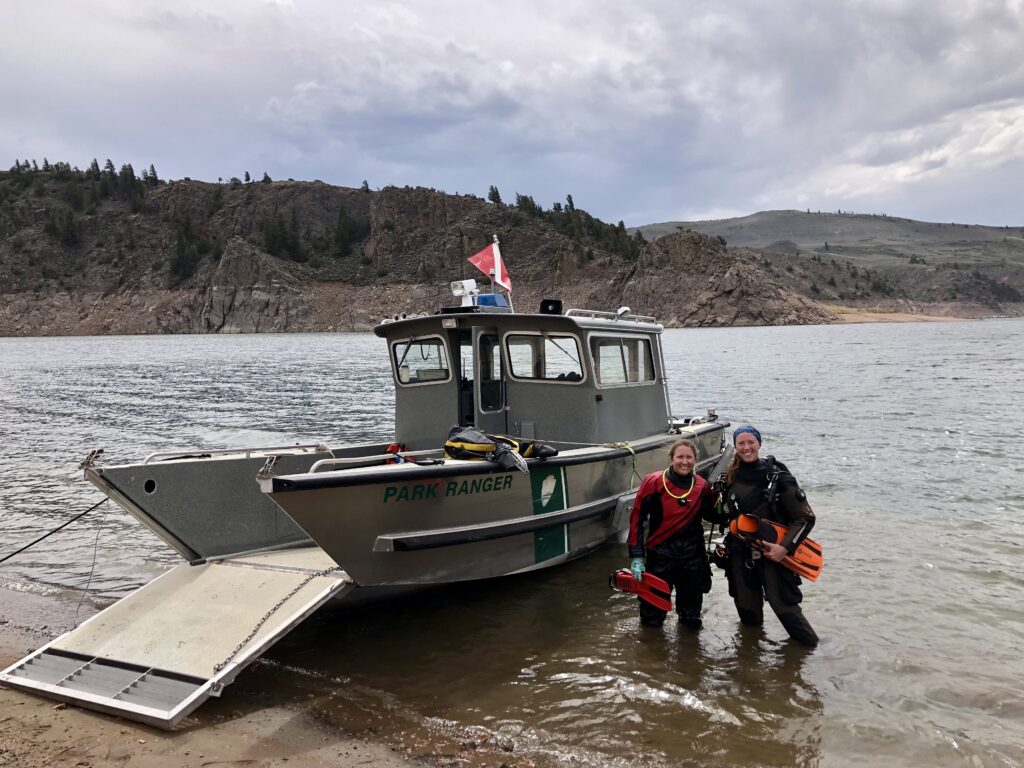
All smiles during a dive with Melissa Post, Curecanti National Recreational Area Law Enforcement Ranger and fantastic host – thank you!


It was so wonderful to have you and your energy here!!
Thank you!